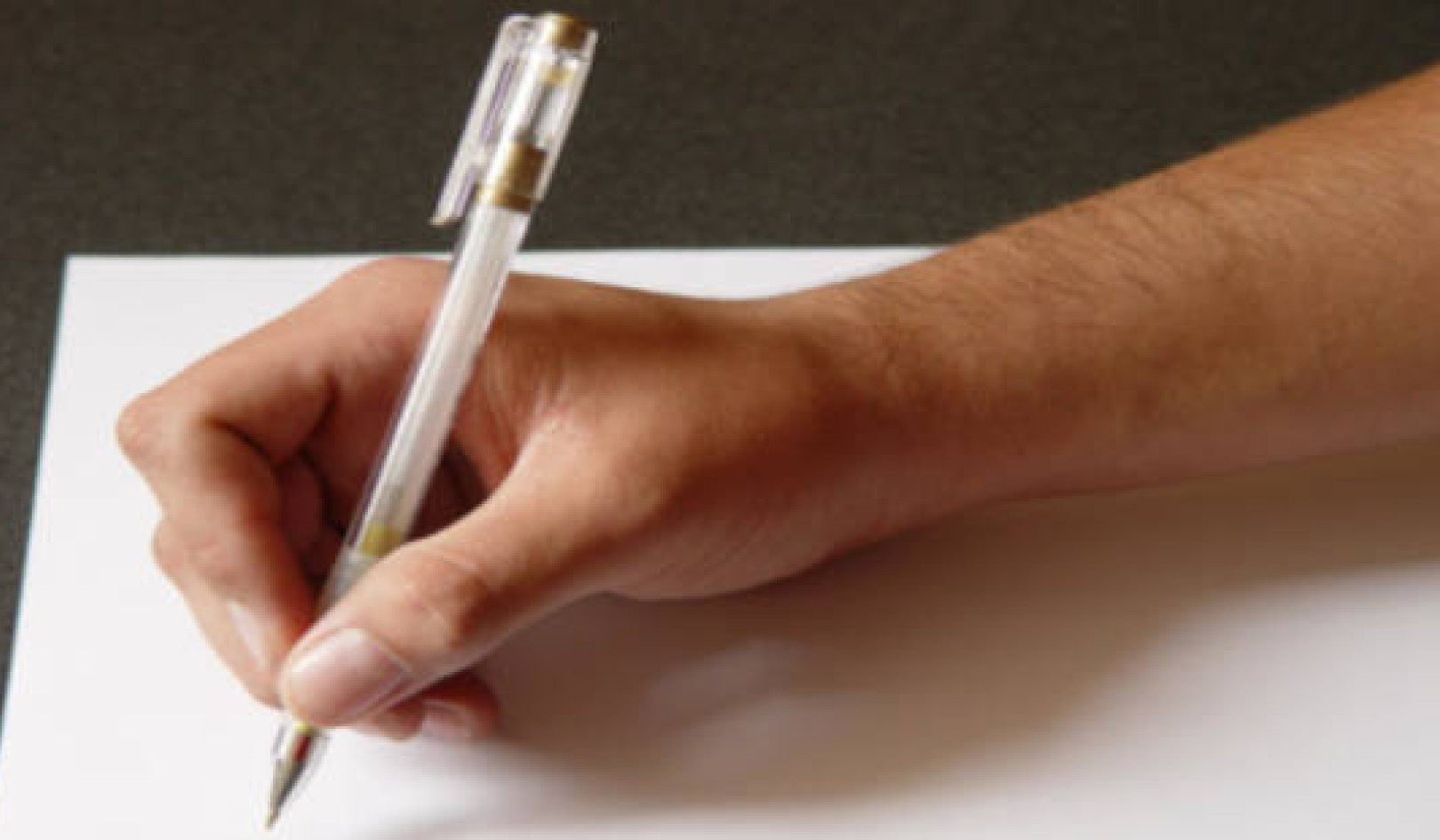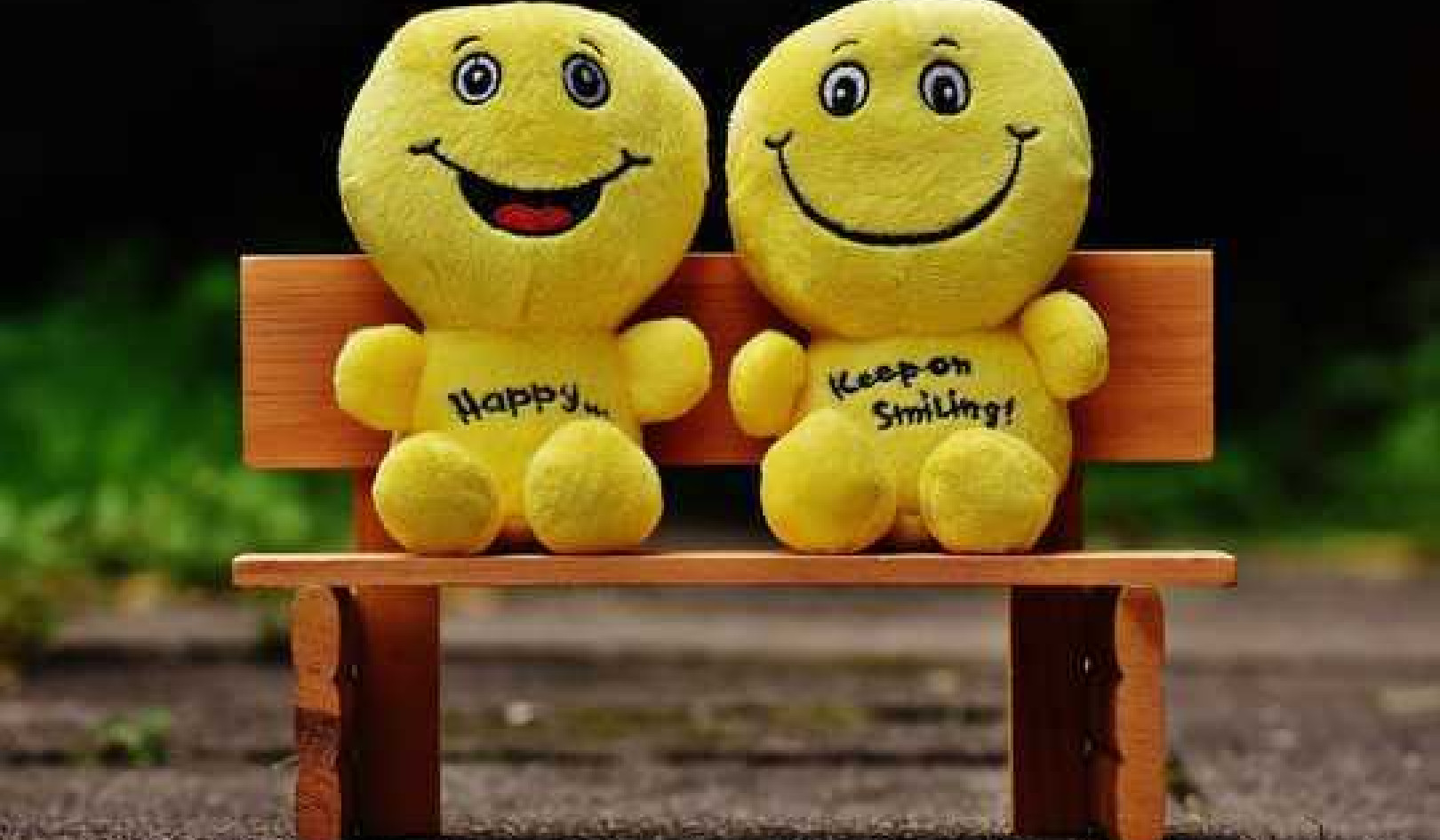
We cling to so many things in life without which we believe we simply cannot be happy or even survive. Often we resolve to clean out the closet to get rid of unnecessary clutter and find ourselves stuffing most of it back -- just in case! Some of us find it difficult to part with objects and mementos of the past, and many of us are pack rats to one degree or another.
This may seem like an innocent habit, but when we consider that our outer world is an accurate reflection of our inner world, we must think again. The clutter in our minds and hearts caused by wrong thinking and feeling is not so innocent, since it is the cause for much of our unhappiness. The accumulations in the subconscious mind exert an even greater influence on our lives. The impressions left in the subtle and causal bodies by past thoughts, feelings, and actions determine the measure of love, happiness, and freedom we are able to experience in this life.
Starting with the Exterior World
It is easiest to begin the process of cleaning out with the exterior world. There is no doubt that it is very helpful to clean out excessive material clutter to simplify existence and to remove the things that invite us to indulgence and emotional reactions. Moreover cleaning our living quarters and closets may prove to be a wonderful exercise in preparation for the quest, since learning to let go on this material level will help us later in the practice of renunciation. It also shows that these objects have no true value and fail to give lasting happiness.
Most often we want things in a given instant because we feel needy and because we do not know how to understand this insistent need. As a result we end up with many possessions when in fact what we truly desire is sustenance for our minds, hearts, and souls, and ultimately everlasting happiness and love.
For the modern seeker, renunciation does not mean throwing out all our belongings and living in abject poverty. Nor does it mean denying our intrinsic delight in comfort, simplicity, and harmony. There is no need to renounce beauty or the good in daily life, and there is nothing inherently wrong with enjoying beautiful things. An appreciation for harmonious works of art, craft, and music is one of our more refined human capacities. We are right to treasure these noble expressions of human creativity. What causes trouble is not inherent in the things themselves or even in the enjoyment of them, but in our attachment to them.
The Eesha Upanishad tells us to "enjoy" but warns, "Do not covet His property." We are free to enjoy, but we must guard ourselves from mentally grasping at any of it. If we were to realize but for a moment that we cannot truly own anything permanently, we might let go of our attachments to material things. If we truly realized that we in fact have nothing we can call our own, we would run the risk of being enlightened in the twinkling of an eye!
In the meantime, even a little reflection will show that whatever we think we own -- our homes and possessions even the body and our vital energies -- all come from the earth and will eventually return to the earth. What we do not see -- the spirit, the Self -- descends to us from above. Matter and spirit join to imbue the individual soul with life energy and human capacities, so that it can give expression to its particular soul nature in creation.
When we consider this truth -- which is the teaching of the great masters and sages -- we realize that there is not very much we can call our own and that there is not much of "me" and "mine" in this picture. When we speak of "I," we usually mean by it "this entity" which has a form, name, and function. When we examine our inner world more closely, we see that these attributes are actually claimed by a specific central "figure" or feeling of self -- the ego -- which says, "This is 'me' and 'mine."' This false self claims everything -- "my" house, "my" clothes, "my" body, "my" perception, "my" talents -- despite the fact that we cannot be that which we perceive.
The Clutter of "I am This", "I am That"
The false self also lays claim to the roles we play and says, "I am a mother," "I am a friend," "I am a doctor," "I am an artist," despite the fact that we cannot be what we do. Unfortunately this identification with what we do is reinforced by terms used by the media. Collectively we are said to be consumers, smokers, drinkers, commuters, sports fans. We should protest this degradation. It is not helpful, and is perhaps even harmful, for a human being to think, "I am a consumer." Eventually we will think that it is our duty to "consume."
The ego claims all thoughts, feelings, and deeds. But it does not stop there. It declares, "This is 'my' life, 'my' energy, 'my' breath, 'my' intelligence," despite the fact that our discrimination and intuition speak to us in no uncertain terms of a higher order. We know that in truth we are the Atman -- the Self -- that which is beyond memory, beyond mind, beyond the body and the senses.
How do we rid our minds of this erroneous thinking? By changing our minds, or, as St. Paul said, "by the renewal of your own mind." Manas -- the moving mind, or organ of thought -- can cause trouble by wrong thinking, but it can also become a faithful servant. Like any servant, we must treat manas with love and patience and feed it regularly with right thinking, ideas, and intentions. When manas is cleansed from false thinking, it becomes a powerful tool in spiritual work.
It is in manas where we first "hear" false notions as they emerge clothed in language and first "see" mental and emotional clutter as it surfaces in the form of ideas we hold about ourselves. These, our most cherished ideas, come into the conscious mind charged with attitudes from the unconscious. They are invariably accompanied by some kind of qualification, positive or negative: "I am a good person," "I am intelligent," "I can't do this," "I can't do anything."
By diligently observing these movements in the mind -- the ideas we hold about ourselves and our automatic responses -- we can see them for what they are: useless clutter consisting of the stale remnants of the past. These harmful notions have nothing whatever to do with the present moment, except in having a negative effect on us. Only by seeing these notions can we stop them. Only when we are awake, when we can remember ourselves in the here and now, are we in the proper state for objective observation.
Words That Lead to Mind Clutter
The next step in ridding ourselves from mental clutter is to shun language that supports the claims of the ego and avoid words such as "my," "me," and "mine." Instead of "my body," we can say "the body"; instead of "my life," we can say "this life." Instead of "how good of me," we can say "excellent" or nothing at all; instead of saying "how stupid of me," we can stop, face the facts, and remedy the situation.
We cannot have a still mind and heart simply by willing it, but we can put a stop to language that expresses criticism, regret, or blame. We can stop saying "he is always... "; "I should have... "; "if I could only... "; "what if..." As we begin to observe and investigate, we will find that this kind of inner commenting and compulsive talking goes on all the time. The thing is to simply see it and stop and not to comment on the commenting. We do not want to waste the light of conscious observation on verbal self-analysis; the aim is stillness of the mind.
Cleaning Out Brings Surprises
 We must not be discouraged when in the course of cleaning out, we find ghosts in the closet -- mental debris we did not know we had. Cleaning out is full of surprises, and not always pleasant ones. When we look at ourselves in the light of conscious self-inquiry, we might become aware that we are not the kind, nonjudgmental persons we thought we were. We may realize that we dwell in an emotional atmosphere of discontent, regret, disappointment, and pessimism during most of our waking hours. When we begin to wake up and look around us, we see the same sentiments reflected in the eyes of others. We see many forms of negative mental stances -- skepticism, sarcasm, nihilism, and fatalism. These stances are not only inscribed on the faces and psyches of people we know, but have taken their collective toll in mental and physical illness.
We must not be discouraged when in the course of cleaning out, we find ghosts in the closet -- mental debris we did not know we had. Cleaning out is full of surprises, and not always pleasant ones. When we look at ourselves in the light of conscious self-inquiry, we might become aware that we are not the kind, nonjudgmental persons we thought we were. We may realize that we dwell in an emotional atmosphere of discontent, regret, disappointment, and pessimism during most of our waking hours. When we begin to wake up and look around us, we see the same sentiments reflected in the eyes of others. We see many forms of negative mental stances -- skepticism, sarcasm, nihilism, and fatalism. These stances are not only inscribed on the faces and psyches of people we know, but have taken their collective toll in mental and physical illness.
Negativity is the absence of the light of truth. It is one of the many manifestations of the force of tamas, which accounts for the darkness, inertia, and ignorance of the world. All this negativity and ill will are in direct opposition to enthusiasm -- which is an indispensable element in our quest. The word "enthusiasm" comes from a Greek word meaning "full of the god" and, by extension, "inspired." Enthusiasm is a state that we can cultivate by not engaging in its opposite. Along with right thinking, intention, and aspiration, enthusiasm will help us over the hurdles on the path.
Cleaning out the causal body -- the antahkarana -- is more difficult and can only be accomplished indirectly through such practices as observation, reflection on sacred truths, and meditation. All thoughts, feelings, and actions arise in the consciousness tinted with a certain color -- the color of our particular antahkarana. This explains the instantaneous like or dislike, approval or disapproval that arises in every activity. Manas has no coloring of its own but is influenced by the coloring of the causal body; hence it thinks accordingly. When the coloring is sattvic, it will reflect poise, when it is rajasic it will result in action, when it is tamasic it causes inertia.
Although every desire arises first in manas (because of its association with the senses and the sense objects that arouse desire), different types of desires are supported by a particular emotional attitude, which is stored in the causal body. It is difficult to see our own attitudes. We have much less difficulty seeing the emotional packages of others. Their attitudes are revealed in language, stance, traits, and mannerisms. We have covered our own flaws and hidden our tendencies with a blanket of forgetfulness. We now need the courage to clean out the secret and hidden acquisitions -- the ancient impurities that color our whole being and becoming.
Wiping Out the Past by Seeing the Present
Before we can wipe out the past, we have to see our false ideas, attachments, and attitudes. In order to see them we have to be conscious and aware in the moment of action. We have to remember to use our power of self-reflection. And we need to use reason and intelligence in the moment of self-reflection.
Now is the perfect time for conscious and honest observation; in fact it is the only chance we have to clear away our impediments. In the light of consciousness we will see the mental clutter we have accumulated since childhood and how it colors our thinking, feeling, and doing. We will then realize that this clutter no longer serves us or fits into our expanding vision of life. As we recognize that these attachments have become too painful, we become eager to give them up. Then we are ready to tackle our deep-seated impediments -- the attitudes behind our passions and aversions.
The threefold method that leads to enlightenment includes observation, discrimination, and renunciation.
Objective Observation
By observing from the point of view of the Witness, the movements of the mind are brought under control. In this state we bypass the ego. We do not act from a subjective stance or lay instant claim to every action. Thus we are less affected by the censorious voices in the mind, and actions become freer, more appropriate, and more creative. We are not affected by passion or aversion, so actions are neutral and do not engender consequences. But most importantly, in such actions there is more joy, love, and happiness.
The two ancient practices of discrimination and renunciation are closely connected to the practice of observation. One, we see; two, we discriminate; three, we renounce.
As we have seen, when inner attachments and claims are truly seen in the light of truth, they dissolve automatically. However, latent tendencies and deep-seated beliefs in the psyche need to be dislodged with the sharp edge of discrimination.
The practice of renunciation helps release the inner clutter of false ideas, attachments, and claims. Unlike the yogis of ancient times, we do not renounce the world and our belongings, but rather renounce the attachment to them. We let go of the attachment on all three levels: causal, subtle, and physical. It is useless to try to give up something simply on the physical level; the desire is still there and simply looks around for something else to which to attach itself. A person may give up an attachment to food only to develop an attachment to starvation or excessive exercise. Renunciation is not giving up ice cream and cookies. It is a spiritual practice and as such works on the subtle and causal level of being, although these in turn are likely to produce effects that will be evident on the physical level. True renunciation is giving up what we are not.
PRACTICE
1. Observe the claims and ideas -- both positive and negative -- you hold about yourself, the roles you play, and the activity at hand in a given moment. Watch manas -- the moving mind -- and put a stop to claims, inner considering, and repetitive thoughts about yourself or anything else by simply saying, "Neti! Neti!" -- "Not this! Not this!"
2. Observe the thinking process. Avoid language that reinforces false claims and beliefs, such as "I am this or that"; "I can't"; "I never"; "my" or "mine".
3. Observe and let go of negative feelings, ill will, regret, guilt, and remorse.
4. Observe attitudes marked by an emotional charge arising in the moment of an event or activity. Let manas become still. Let go of the attitude and return to the silent observer.
5. Practice renunciation and discrimination. Let go of outworn beliefs and notions about yourself and reality. You may want to write down the most troublesome attitudes and burn the list while you consciously renounce them and offer them up to the One Self.
Reprinted with permission of the publisher,
Lindisfarne Books. ©2001. www.lindisfarne.org
Article Source
Being Consciousness Bliss: A Seeker’s Guide
by Astrid Firtzgerald.
 Being Consciousness Bliss is a rich, profound, and eminently accessible compendium of wisdom that will help orient people toward a more fruitful spiritual search. Drawing on a dazzling array of sources, including the insights of G.I. Gurdjieff and P.D. Ouspensky as well as the spiritual traditions of the East, it gives a clear and compelling account of the true inner structure of the human being and how it may be developed to its full potential.
Being Consciousness Bliss is a rich, profound, and eminently accessible compendium of wisdom that will help orient people toward a more fruitful spiritual search. Drawing on a dazzling array of sources, including the insights of G.I. Gurdjieff and P.D. Ouspensky as well as the spiritual traditions of the East, it gives a clear and compelling account of the true inner structure of the human being and how it may be developed to its full potential.
Info/Order this book. Also available as a Kindle edition.
About the Author
Astrid Fitzgerald is an artist, writer, and passionate student of the Perennial Philosophy who has applied its principles to her life and art for over thirty years. She is the author of An Artist's Book of Inspiration: A collection of Thoughts on Art, Artists, and Creativity (Lindisfarne Books, 1996), and is a member of the Society for the Study of the Human Being in New York City.


























